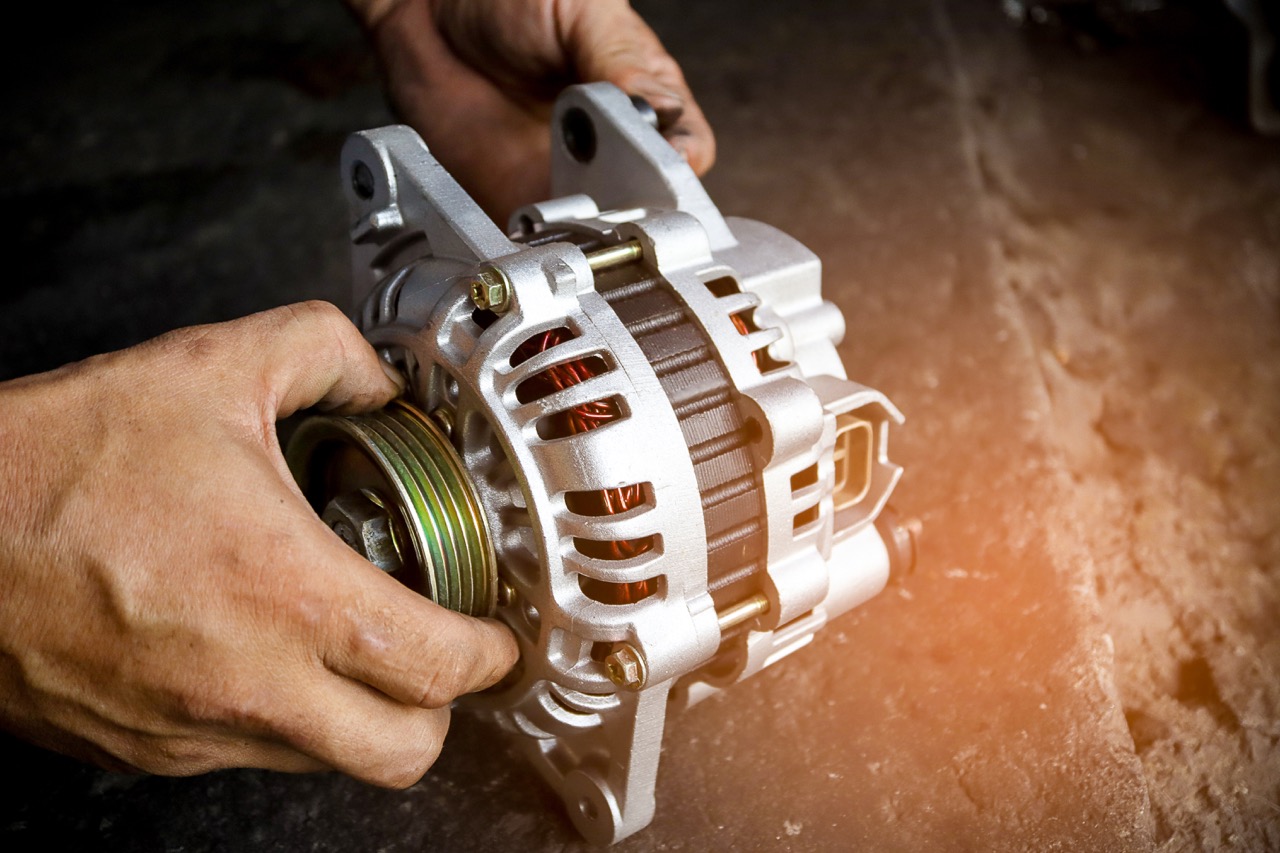
Your alternator is an important part of your vehicle. Learn the signs of a failing alternator from the experts at Provo Master Muffler.
The Thing About Alternators
Unfortunately, alternator problems can be mistaken for other issues in your vehicle, namely a faulty battery or a failing starter system. If you’re experiencing trouble starting your vehicle, even after it’s driven fine, the alternator might be the culprit. Let’s take a look at what causes damage to an alternator.
What Damages an Alternator?
The alternator is part of the starter system, and it can be damaged in a number of ways:
- Incorrectly using jumper cables
- Overloads to the electrical system
- A leak in the alternator itself
- Overtightened belts in the alternator
Your alternator may not be working at its best because there are loose connections, and electricity isn’t making it to other systems in your vehicle. Or, perhaps the diode rectifier isn’t working, so your car can’t change alternator current (generated in the alternator) to direct current (required to operate the car’s accessories). A problem switching AC to DC power means your alternator may be producing enough power, but it’s not being converted for use in the vehicle.
Signs of a Failing Alternator
Since the alternator ensures your battery stays charged when not in use, constantly being stuck with a dead car every morning might be an alternator issue. Here are some other signs your alternator has issues.
- Engine stalls
- Strange engine sounds
- Burning smells
- Interior and exterior lights are dim
- Electrical systems don’t operate properly, including power windows and locks, internal GPS, and the air conditioner
Dashboard Warning Lights
Some vehicles have a battery-shaped, “ALT” or “GEN” light on their dashboards. It may be obvious that the battery light is signaling a problem with the battery and the “ALT” light is signaling an issue with your alternator, but what does “GEN” stand for?
In older vehicles, the “GEN” light indicates that there is a problem with the generator belt. This can also be known as the alternator or serpentine belt, and it powers the alternator. If it’s misaligned, too tight, or too loose, your alternator performance suffers. If you can visually inspect the alternator belt, look for cracks and wear; if you see any, it’s time to replace it.
Overloaded Electrical Systems
Maybe a warning light only comes on when you’re using multiple electrical systems at the same time. For example, you’re driving with headlights on, windshield wipers going, and the radio. Everything’s fine until you try to turn on the seat warmers, too. Then your dashboard illuminates a battery or ALT light. It’s a sign the electrical system is overloaded, and the max output of the alternator has been reached. Usually, your vehicle should easily be able to put out up to 14.5 volts; if it’s failing, however, running that much electricity triggers a warning light.
Smells and Sounds to Look For
When an alternator is on its last legs, you might hear growling or whining sounds from the engine. If you smell burning rubber, it could be the alternator belt, which experiences a lot of friction and heat under the hood.
You may not be familiar with the smells of an electrical fire, but that’s what an overextended alternator can smell like. It may be a bit fishy, smell like copper, or smell like burning plastic. Regardless, any smells of fire in your vehicle should be addressed immediately.
HOW TO KNOW IT’S THE ALTERNATOR, NOT THE BATTERY
Since it can be tricky to determine if you’re having an alternator problem vs a battery problem, the auto repair team at Provo Master Muffler has a tip.
- Jumpstart your dead vehicle and remove the cables as soon as the vehicle starts
- If the car dies again right away, it’s a sign the alternator can’t keep the battery charged
- If the car continues to run, the alternator is probably fine, and the problem is with the battery
An alternator should last about seven years, or up to 150,000 miles (whichever comes first). But, that doesn’t mean you won’t encounter problems in your vehicle before then.
Fixing or Replacing an Alternator
You can replace an alternator yourself, but only if you feel comfortable taking apart things under the hood with the right tools. Simplified steps for replacing the alternator are as follows:
- Disconnect your vehicle’s battery
- Disconnect all wiring from the alternator
- Remove the alternator belt from the pulley (perhaps the hardest part)
- Remove the bolts that connect the alternator to its brackets
- Pull out the alternator
Once you’ve removed the faulty alternator, do the steps in reverse order to install the new one.
Master Muffler of Provo is happy to help diagnose and address issues you’re experiencing with your vehicle. Give us a call today, or make an appointment online HERE.
Related Posts
As an EV owner, understanding your vehicle's battery is critical. From its capacity to its lifespan, and everything in between, we'll guide you through what you need to know to optimize your EV experience. So buckle up and get ready - we're about to shed some light on the electrifying world of EV batteries. What [...]
If your car is running hot, it can be a sign that something’s not right with your engine. Fortunately, diagnosing the cause of an overheating engine isn't too difficult if you know what to look for and how to address it. Keep reading if you want to learn the most common issues that occur when [...]
Your vehicle's exhaust system serves a critical role in managing the byproducts of the combustion process and ensuring optimal engine performance. The appearance of colored smoke from the exhaust pipe, either when stationary or accelerating, can provide valuable clues to underlying mechanical issues. What is a car exhaust? A car exhaust is a system [...]





